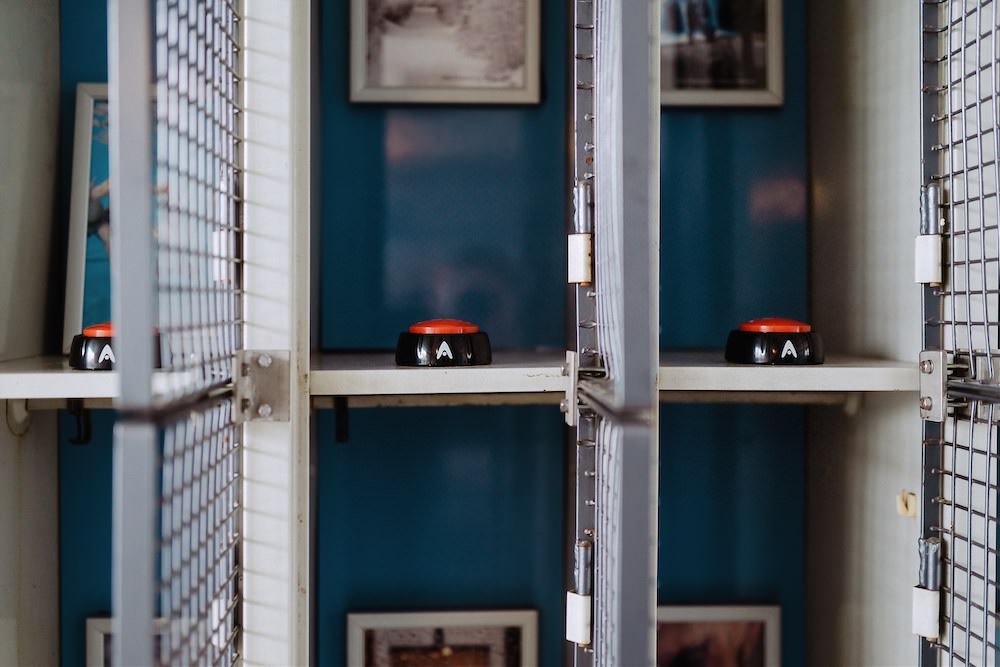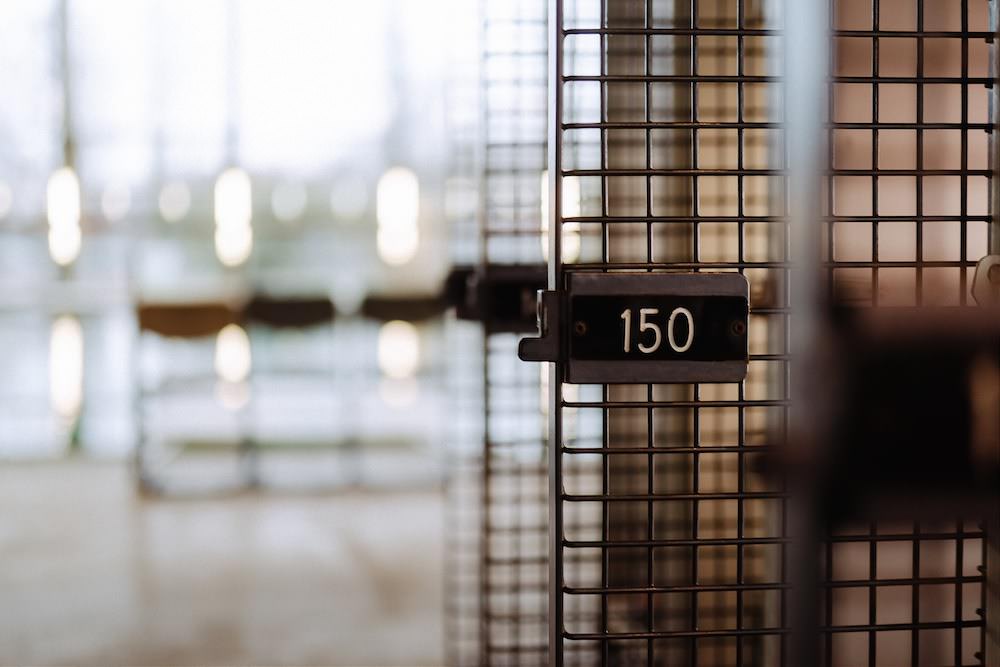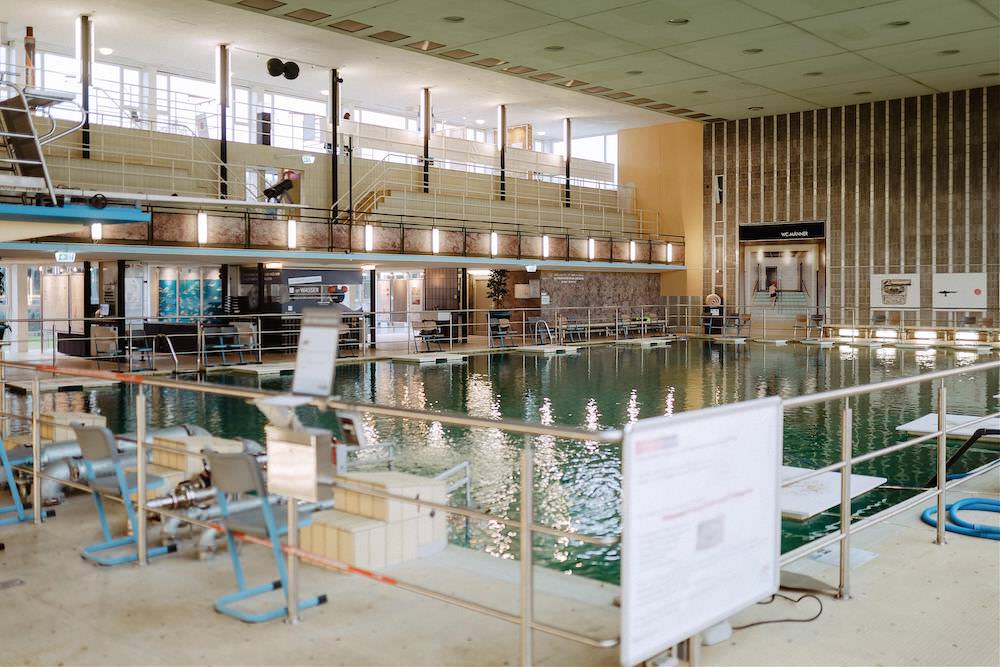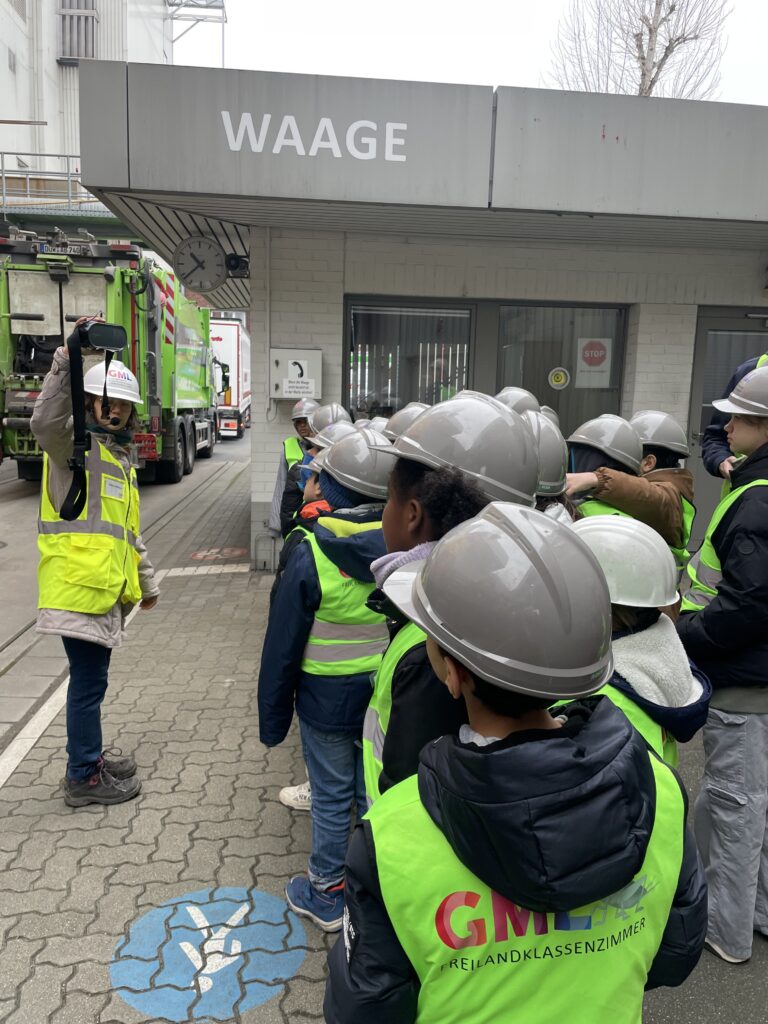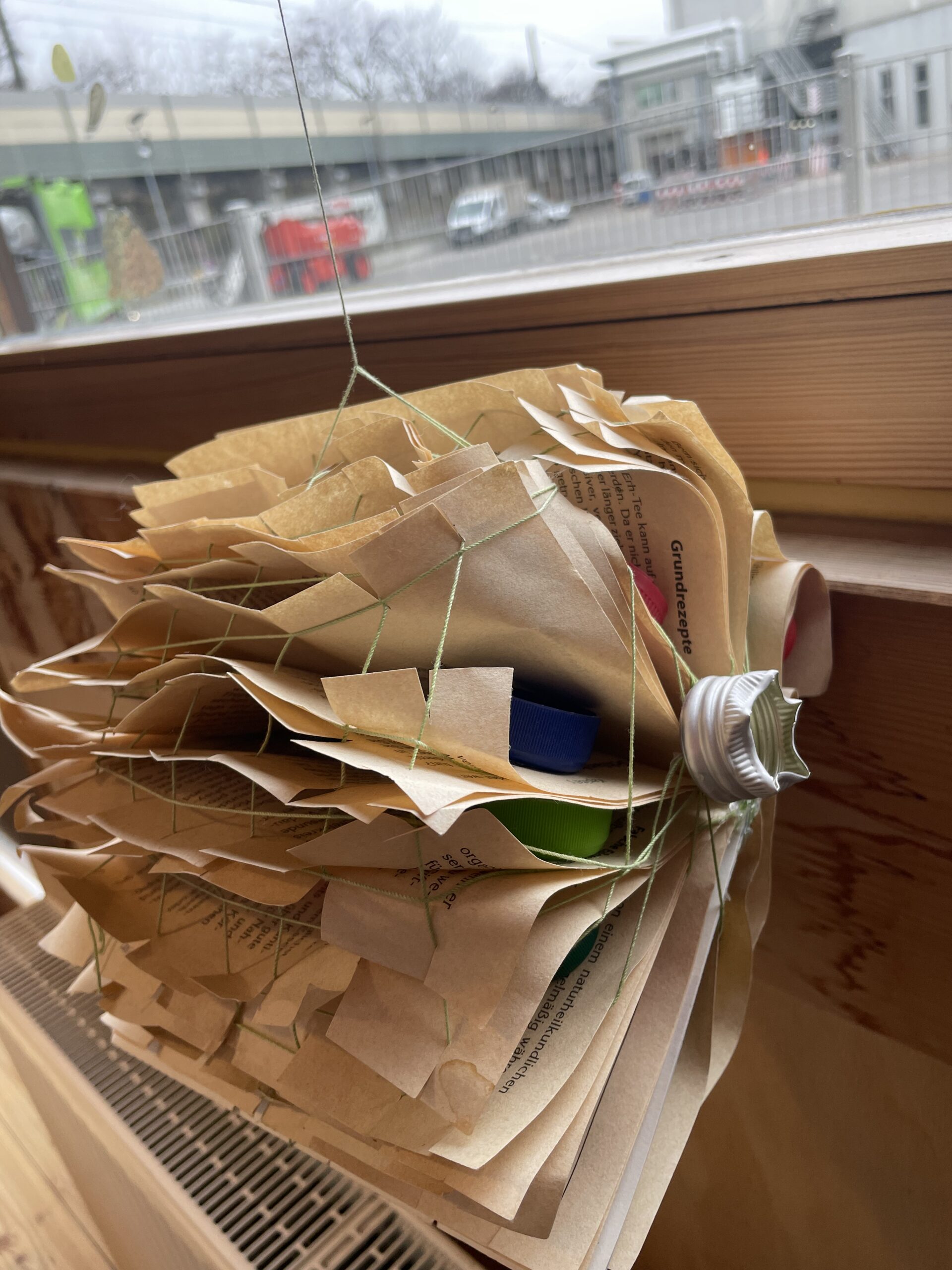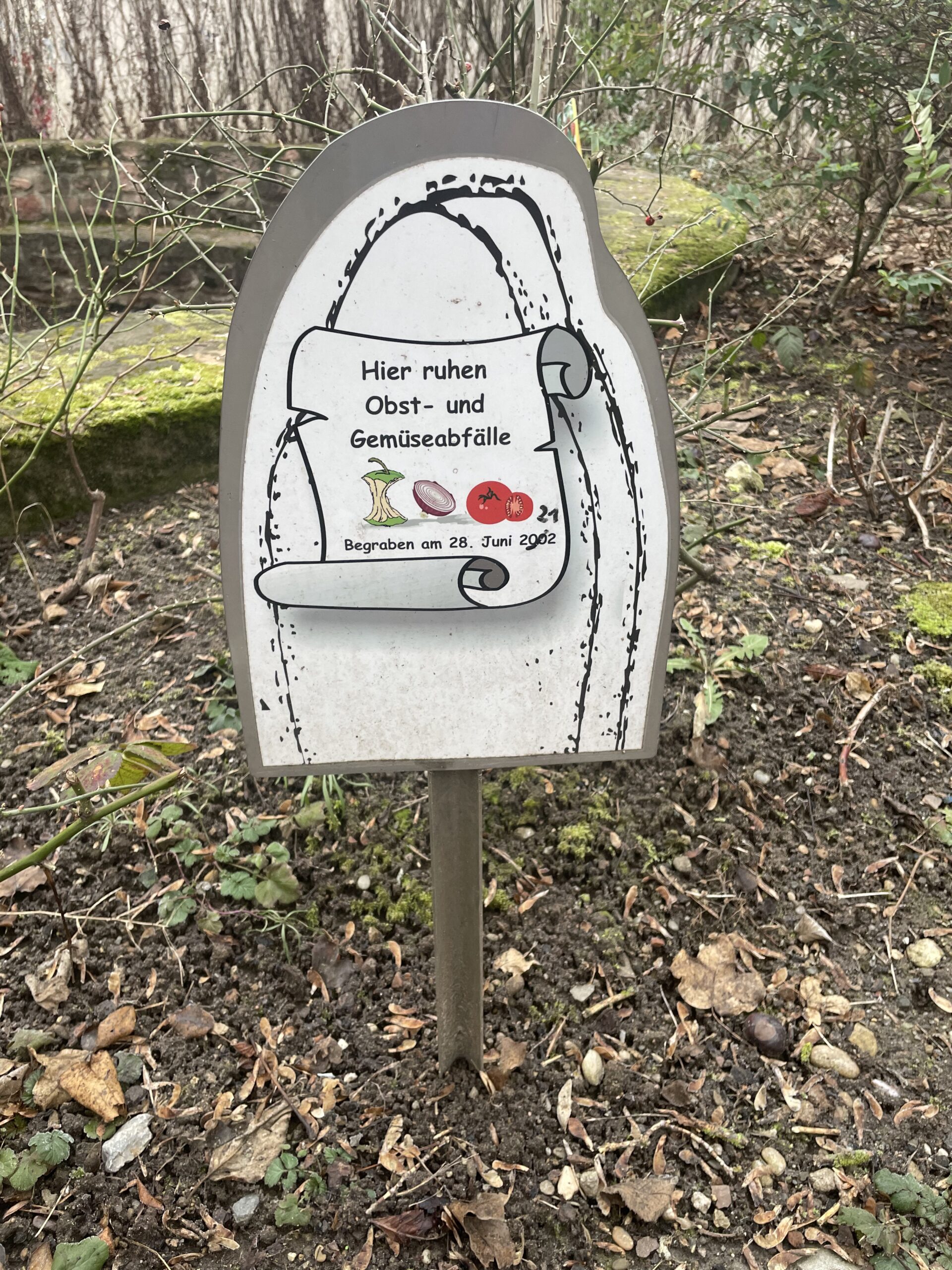There are three unusual “learning environments” for children in Ludwigshafen: in the waste-to-energy plant, in an outdoor classroom and in the former indoor pool Hallenbad Nord. There, you can learn a lot about how to protect the climate. Not least because sometimes the sound of the sea can be heard at the pool attendant’s cabin.
Ella comes prepared—with a clothes peg. She wears it proudly on her nose as soon as the six-metre-big garbage claw has released its load—high above their heads. The moment plenty of the household rubbish has disappeared in the incineration funnel of the waste-to-energy plant Gemeinschafts-Müllheizkraftwerk Ludwigshafen GmbH (GML), a cloud of dust rises up. Yet, the eight-year-old and her classmates are cheerful and impressed at the same time. They have been learning about waste in their general studies classes for some time now, but none of them has ever taken a tour just like the one they are experiencing this morning.

“Environmental education”, as it is called, is what brought the 22 children of the Schillerschule primary school in Mundenheim so close to this gigantic garbage claw. Before that, they had already explored the beautiful outdoor classroom situated on a green space on the edge of the waste-to-energy plant, sorted rubbish under the supervision of environmental educationalist Bettina Böhmer and investigated a compost heap. After that, they went straight to the power plant together. And only a few minutes walking distance away from the colossal incineration plant, the kids could even discover a third unusual site. GML’s former Hallenbad Nord swimming pool has been serving as a water basin for firefighting since 2013. This not only saved the wonderful post-war modernist building from 1956 by Heinrich Schmitt and Philipp Blaumer from destruction, but it also allowed for a third learning environment for children and adults, picking up on the topic waste and even taking it one step further.

The permanent exhibition of the swimming pool with the title “The Four Elements” is about fire, water, earth and air, but most of all it addresses the big questions of our times—like: How can we avoid waste? What does climate change actually mean for us? And what can each and every one of us do to use the resources of our planet in a more conscious way? Seeking answers to these questions, visitors can follow a trail across the swimming pool—from the gallery downstairs to the former shower units and the changing rooms. But the exhibitors did not content themselves with information panels alone. With the help of VR goggles, visitors can look directly into the furnace of the power plant next door. Right beside the pool attendant’s cabin, at the touch of a button you can hear the different sound forms of water—from the crunching sound of walking on snow to the rushing sound of the sea. Behind old signs, there are cartoons, an architectural model of the swimming pool or funny video clips on the topic of consumerism in converted garbage bins waiting to be discovered.
